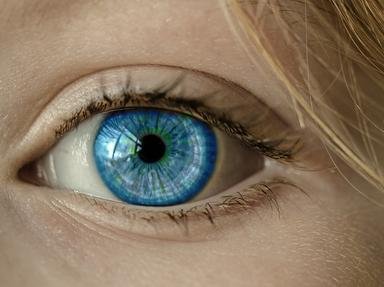Quiz Answer Key and Fun Facts
1. Which of the following is generally not true regarding blindness?
2. Being blind means not being able to see anything at all.
3. The leading cause of visual impairment worldwide is refractive error. What is a refractive error?
4. Visually impaired people may use a cane with which color tip to help them walk?
5. People who are totally blind frequently suffer from Non-24. What is Non-24?
6. Which of the following is typically not a cause of visual impairment?
7. How does one contract Stargardt disease?
8. When conducting an eye test, what is one reason an ophthalmologist might use a LogMAR chart over the tradition Snellen chart?
9. Blindness can be caused by infections such as trachoma, which is a roughening of which part of the eye?
10. People with diabetes are at a higher than average risk for visual impairment.
Source: Author
Joepetz
This quiz was reviewed by FunTrivia editor
rossian before going online.
Any errors found in FunTrivia content are routinely corrected through our feedback system.
